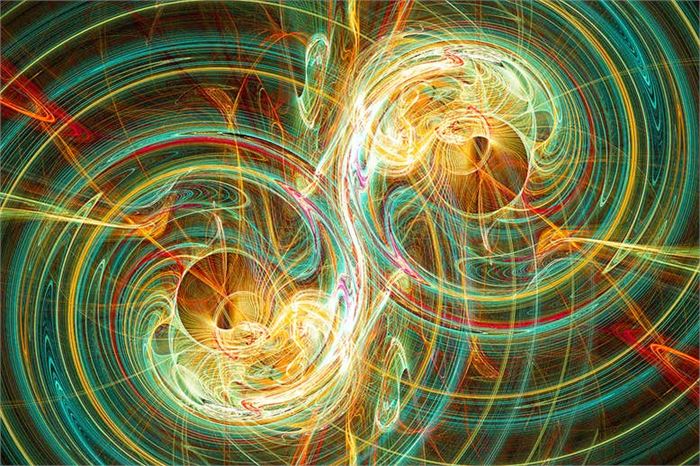 두 블랙홀의 융합에 의한 중력파 방출 시뮬레이션. 알프레드 파시카/과학 사진 도서관
두 블랙홀의 융합에 의한 중력파 방출 시뮬레이션. 알프레드 파시카/과학 사진 도서관
최근 미국 천문학회 회에서 발표된 LIGO 팀의 중력파 관측 결과가 학계의 뜨거운 관심을 불러일으키고 있다. 태양 질량 1.1~1.7배의 중성자별과 태양 질량 2.5배의 어떤 물체와 충돌에 의해 방출된 중력파다. 하나는 중성자별이 분명한데 태양 질량 2.5배인 물체는 중성자별인지 블랙홀인지 분명치 않다. 중성자별이기엔 너무 무겁고, 블랙홀이기엔 너무 가벼운 것이다. 이번 발견은 우리가 그동안 알고 있는 중성자별과 블랙홀의 생성과 진화 메커니즘에 새로운 의문을 제기한다.
이에 관한 과학전문매체 뉴사이언티스트(NewScientist)의 7일자 보도를 소개한다.
신비한 물체에 의해 생성돼 우주를 가로질러 진행하던 이상한 중력파가 최근 포착됐다. 그것은 지금까지 발견된 것 중 가장 작은 블랙홀이거나 가장 큰 중성자별일지 모른다.
중력파는 거대한 물체의 움직임에 의해 발생하는 우주 시간공간의 파문이다. 레이저 간섭계 중력파 관측소(LIGO)는 최근 몇 년간 한 쌍의 중성자별뿐만 아니라 여러 쌍의 블랙홀 충돌에서 발생한 중력파를 검출했다.
LIGO 팀원 카테리나 채치오아노우(Katerina Chatzioannou)는 1월 6일 하와이에서 열린 미국천문학회 회의에서 "이제 우리는 정말 수수께끼 같은 충돌을 발견했다"고 말했다. 루이지애나 주의 LIGO 탐지기는 두 물체가 충돌하는 징후를 발견했지만, 두 물체 중 하나가 무엇인지 아무도 확신하지 못한다.
이 충돌에서 물체 중 하나는 분명히 태양 질량의 1.1배에서 1.7배 사이의 질량을 가진 중성자별임이 분명하다. LIGO 멤버인 넬슨 크리스텐슨(Nelson Christensen)은 다른 물체는 중성자별일 수도 있지만, 수개월간의 분석에도 불구하고 그것이 사실인지를 증명할 수 없었다고 말했다. 하나는 중성자별인데 다른 하나는 중성자별이 아닐 수도 있다는 얘기다.
이것의 질량은 태양의 2.5배 정도인데, 이것은 블랙홀이 될 수 있을 만큼 충분한 질량을 가졌다는 것을 의미한다.
"우리는 이렇게 큰 질량을 가진 중성자별을 본 적이 없다"라고 크리스텐슨은 말한다. "문제는, 정말 중성자별인가? 만약 그렇다면, 우리는 정말 무거운 이상한 중성자별을 발견한 것이고, 만약 그것이 블랙홀이라면 그것은 정말 가벼운 블랙홀이다."
이렇게 작은 질량의 블랙홀이라는 생각은 그럴듯하지만, 지금까지 발견된 것 중 가장 가벼운 블랙홀이 태양 질량의 3.3배이다. 따라서 문제의 물체가 태양 질량의 2.5배 정도라는 것은 그것이 블랙홀이 아니거나, 블랙홀이라면 지금까지 발견된 것 중 가장 작은 블랙홀이라는 것을 말해준다.
만약 그것이 지금까지 발견된 것 중 가장 작은 블랙홀이 아니라 사실 중성자별이라 해도, 이 물체는 여전히 특이하다. 왜냐하면 어떻게 근처의 파트너가 있는 중성자별이 그렇게 커질 수 있는지 명확하지 않기 때문이다. 지금까지 관측된 중성자별 중 가장 무거운 것은 태양 질량의 2.01배이다.
"이것은 지금까지 관측된 어떤 중성자별들보다도 분명히 무겁습니다"라고 채치오아노우는 기자회견에서 말했다. "이번 발견은 어떻게 그러한 체계가 쌍성계를 형성하고 융합해 중력파를 방출하는가에 대한 새로운 이해를 요구한다."
우리는 이런 종류의 이상한 발견에 익숙해져야 한다고 크리스텐슨은 말한다. "우리는 지금 일주일에 한 번 꼴로 중력파를 탐지한다"면서 "이처럼 많은 중력파 사건들에서 우리는 종종 멋진 것들을 보게 된다."
Gravitational wave mystery could be a sign of a new kind of black hole
SPACE 6 January 2020 /By Leah Crane
A strange set of gravitational waves have been sent across space by a mysterious object. It could be the smallest black hole ever found or the largest neutron star.
Gravitational waves are ripples in space time that are caused by the motion of massive objects. The Laser Interferometer Gravitational-Wave Observatory (LIGO) has detected these waves from many pairs of black holes colliding over the last few years, as well as one pair of neutron stars.
Now they have found a truly puzzling collision, said LIGO team member Katerina Chatziioannou at a meeting of the American Astronomical Society in Hawaii on 6 January. A LIGO detector in Louisiana spotted signs of two objects colliding, but nobody is quite sure what one of the objects is.
In this smash-up, one of the objects was definitely a neutron star with a mass between 1.1 and 1.7 times the mass of the sun. While the other object is probably also a neutron star, months of analysis have not been able to prove it is, says LIGO team member Nelson Christensen.
Its mass could be as high as 2.5 times that of the sun, which means it could be massive enough to be a black hole.
Read more: Black hole that ‘rings’ like a bell shows Einstein was right
“We’ve never seen any neutron star with this large a mass,” says Christensen. “The question is, is it really a neutron star? If it is, then we’ve detected a really strange heavy neutron star, but if it’s a black hole it’s a really light black hole.”
While the idea of such a low-mass black hole is plausible, the lightest one anyone has found thus far is 3.3 times the mass of the sun. If it is not the smallest black hole ever found, but in fact a neutron star, this object is still unusual because it’s not clear how a neutron star with a nearby partner could get so large.
“It’s clearly heavier than any other pair of neutron stars ever observed,” said Chatziioannou in a press conference. “The existence of a system like that challenges our current understanding of how those systems form binaries and merge to give off gravitational waves.”
We should get used to this kind of strange discovery, says Christensen. “We’re getting about one gravitational wave event a week now, and that’s a lot,” he says. “With a lot of events you inevitably see cool stuff every now and then.”
https://www.newscientist.com/article/2229190-gravitational-wave-mystery-could-be-a-sign-of-a-new-kind-of-black-hole/
<'우주관 오디세이' 저자>